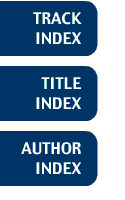
Track: Ecology, Conservation, and Archaeology
GIS Data for Erosion Assessment in the Upper Ewaso Ngiro North Basin, Kenya

Bancy M. MatiF.N. Gichuki , R.P.C. Morgan
The planning and management of natural resources requires continuous monitoring of the various factors that interact in a changing environment such as in the Upper Ewaso Ngiro Basin. A multidisciplinary approach can be used to address these issues, which may include hydrology, soil erosion assessment, land use and vegetation, crops and animal husbandry, agricultural activities, and socioeconomic factors. All these factors are associated either directly or indirectly with the soils, rainfall, topography, land use, and vegetative cover in the region. Developing a reliable GIS database is one way toward this goal. This paper describes the work done in the Upper Ewaso Ngiro Basin of Kenya. This is a region that forms part of the greater Ewaso Ngiro River drainage basin, the largest and least studied river basin in Kenya. The study area occupies 15,634 square kilometers, lying on the lee slopes of both Mt. Kenya and the Aberdare Range. The region has diverse climate, topography, soils, land use, and vegetation covers, which includes cultivated lands, forests, wildlife, and grazing lands. However, most of the region is dry. GIS data for this region are an important tool in the planning of development projects, management, and conservation of resources. The GIS data that were prepared included rainfall data, agroclimatic zones, soils, topography (digital elevation models), land use/cover map, and the drainage system. These data are now being used to study soil erosion and hydrology and for planning and management of natural resources. The GIS software used in this work were PC ARC/INFO and ArcView GIS.
Bancy M. Mati
Silsoe College, Cranfield University
Silsoe, Bedforshire
,
UNITED KINGDOM
Telephone: 44 (0) 1525 8633205
Fax: 44 (0) 1525 863001
E-mail: B.M.MATI@cranfield.ac.uk